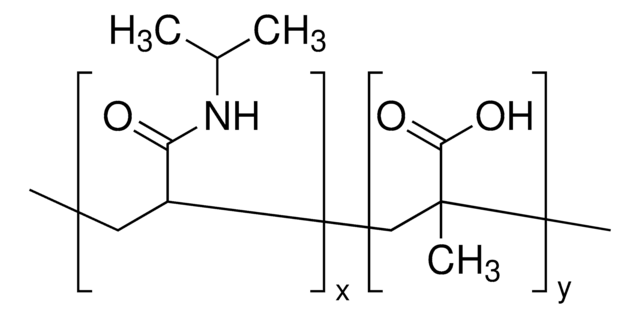901702
Carboxylic acid-poly(ethylene glycol)-b-poly(ε-caprolactone)
PEG average Mn 5000, PCL average Mn 5000
Synonym(s):
Carboxylic acid PEG-PCL diblock copolymer, Carboxylic acid-PEG-PCL, PEG-b-PCL, PEG-PCL
About This Item
Recommended Products
form
powder or solid
mol wt
PCL average Mn 5000
PEG average Mn 5000
color
white to off-white
PDI
≤1.3 (by GPC)
shipped in
dry ice
storage temp.
−20°C
Related Categories
Application
Storage Class Code
11 - Combustible Solids
WGK
WGK 3
Flash Point(F)
Not applicable
Flash Point(C)
Not applicable
Choose from one of the most recent versions:
Certificates of Analysis (COA)
Don't see the Right Version?
If you require a particular version, you can look up a specific certificate by the Lot or Batch number.
Already Own This Product?
Find documentation for the products that you have recently purchased in the Document Library.
Articles
Professor Robert K. Prud’homme introduces flash nanoprecipitation (FNP) for nanoparticle fabrication, which is a scalable, rapid mixing process for nanoparticle formulations.
Our team of scientists has experience in all areas of research including Life Science, Material Science, Chemical Synthesis, Chromatography, Analytical and many others.
Contact Technical Service







